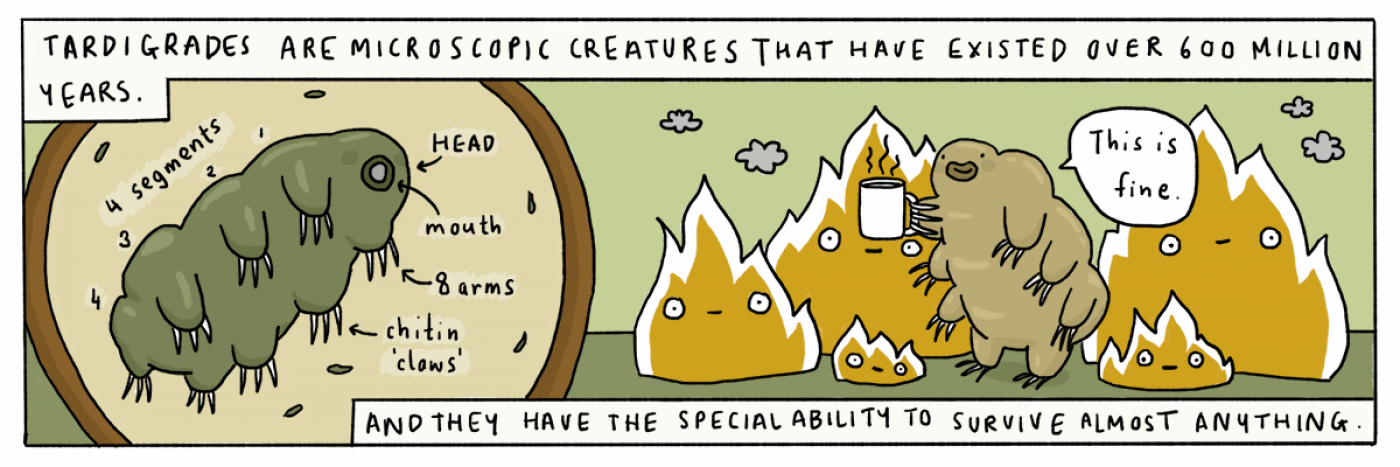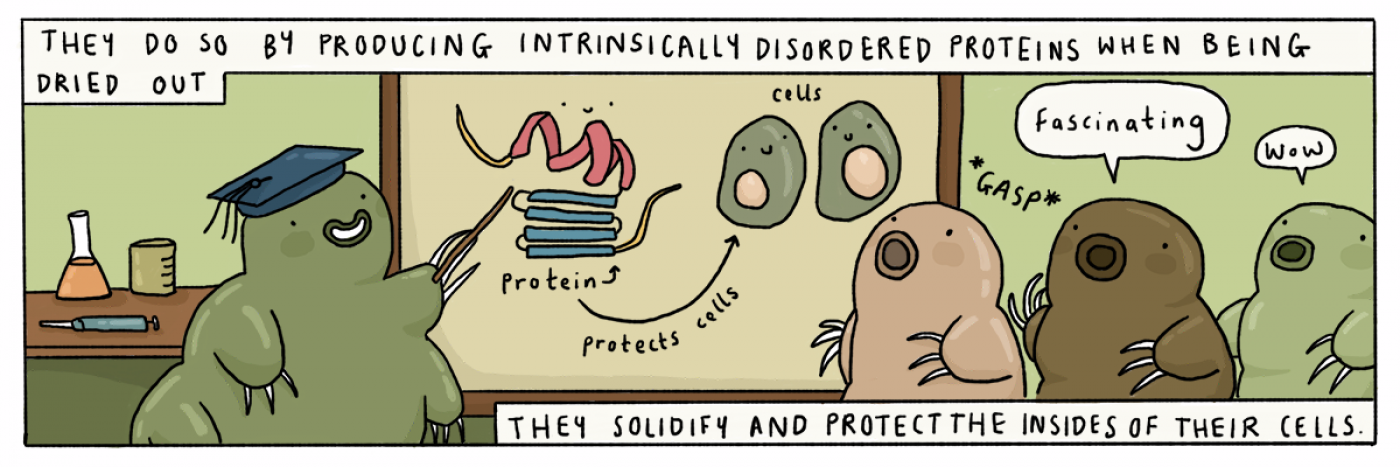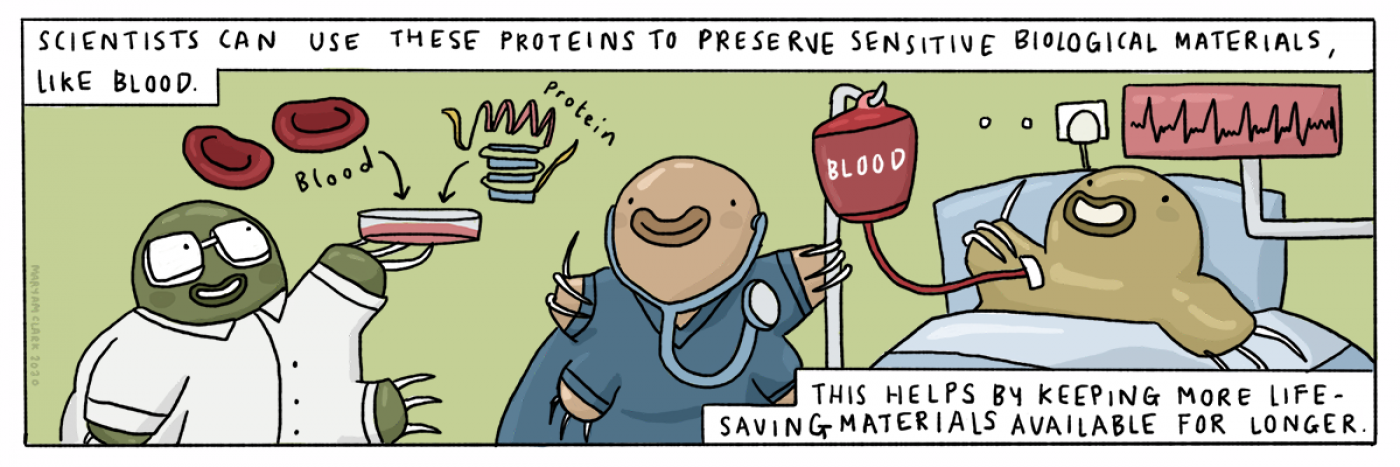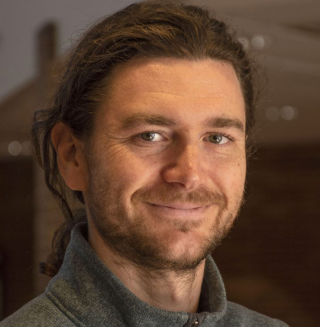Tardigrades



Tardigrades in Detail
by Maryam Clark, PhD student at UCL
The problem of preserving sensitive biological materials (be that cells, living tissue or even vaccines) for long periods of time is a massive one and scientists all over the world are trying to figure out alternative solutions. In 2017, Dr Thomas Boothby and colleagues at the university of North Carolina conducted a study on tardigrades and their ability to survive extreme heat to try and solve the problem. In the video below, you’ll learn the molecular biology and experimental designs Boothby and colleagues used and designed to figure out the exact protein tardigrades use as a cryoprotectant to survive those extreme conditions and how they applied that mechanism to other sensitive biological molecules and systems.
MediaCentral Widget Placeholderhttps://mediacentral.ucl.ac.uk/Player/aghGiJGi

“I was always that kid that was outside collecting things, but I don’t think I met a “real scientist” until high school. In high school, I worked for one of my professors collecting bats at night (one of the best jobs I’ve ever had). But what really got me hooked was taking cell and developmental biology courses. Along with being interesting, cells and embryos are just really visually stunning.Thomas Boothby, Assistant Professor, University of Wyoming Read more . . .
Further Reading
Reading around a subject is a requirement that most lecturers expect of their students at university. Below are some resources you can use to dive deeper into the topic and strengthen your own understanding. Don’t worry if they don’t all make sense to you; this is all still very much university-level stuff, and a few are professional scientist level! Your only job here is to just give it your best go and gain a better personal insight into what your own university experience might entail in the future, as well as part of what it means to be a scientist! I have included my own guide to reading a research paper.
-
Boothby et al (2017) "Tardigrades use intrinsically disordered proteins to survive desiccation"
This is the paper that the above video is based on. Don't worry if you don't understand it all.St. Fleur, N. (2017) "How a Water Bear Survives, Even When it's Dry" The New York Times
This article is based on Boothby's research. Do you find it to be a good media representation of his research, especially now that you’ve ‘read’ his research paper? How would you explain his paper if you worked as a science journalist for the New York Times?Olena, A. (2017) "Unstructured proteins help tardigrades survive desiccation" The Scientist
Another article detailing Thomas' work. Do you notice any differences in storytelling between this article and the New York Times one?Thomas Boothby website
Having a professional website helps scientists to communicate their science to people all over the world. Communicating science to the general public, as well as other scientists, is hugely important to promote widespread understanding of important topics and also increase the chances of international collaborations between scientists with similar research interests.Further videos
"How to find water bears" Mike likes Science
"Tardigrades: the most resilient animals in the universe" Skill Share
"Tardigrade stress proteins for enzyme protection" (2017) A presentation given by Professor Samantha Piszkiewicz who supervised the lab where Thomas Boothby carried out his research that resulted in the paper of 2017.
 Close
Close


